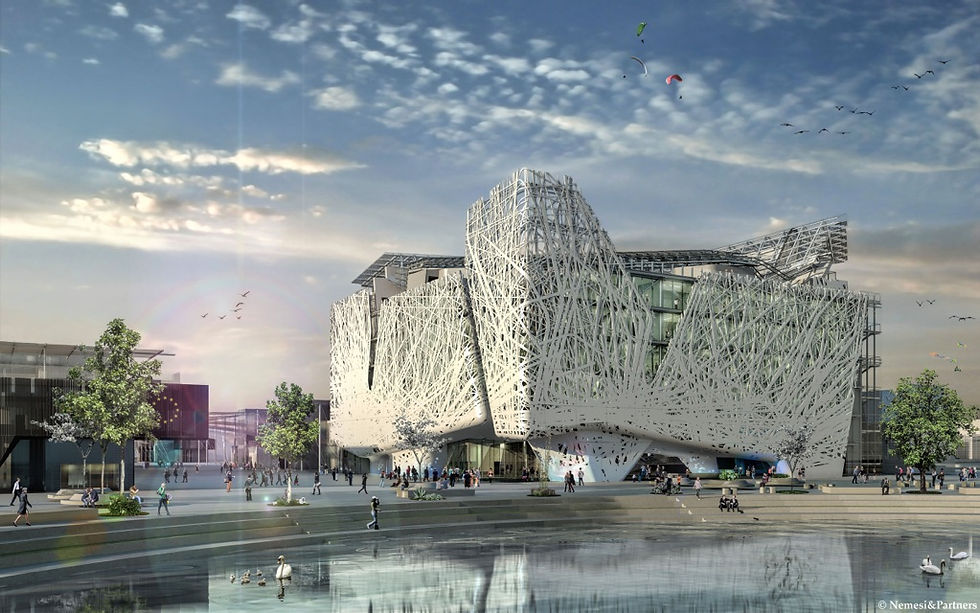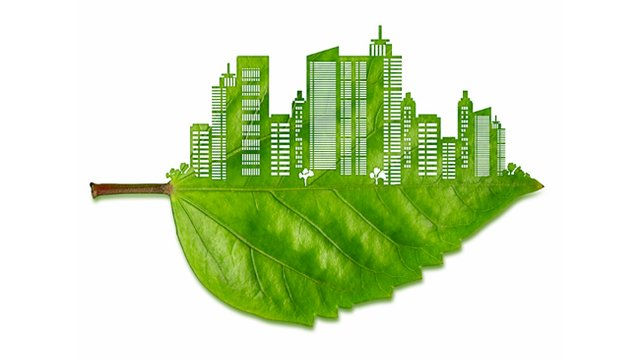This article focuses on the evolution of the construction industry and its cardinal role in the achievement of the 2030 Sustainable Development Goals (SDGs).
In 2019, the Italian Green Building Council (GBC) organized a conference in Milan, focusing on the innovative topic of Green Building and its relation to sustainable development. The focal point was the discussion of the role the construction industry could play in the implementation of the SDGs and how it has and will contribute to sustainable development.
In fact, Giuliano Dall'Ò (president of GBC Italy) stated that, "... buildings will play their part as catalysts for change that is increasingly oriented towards structural, technological and environmental integration between buildings, infrastructures and open spaces in search of a new balance between the needs of man and that of the natural environment. “
This reflects the idea that sustainable building methods can have an immensely beneficial role in sustainable development, and should play a key role in the discussions on climate change.

THE NINE SUSTAINABLE OBJECTIVES RELATED TO THE CONSTRUCTION INDUSTRY:
To date, there are 17 Sustainable Development Goals (SDGs) that are scheduled to be achieved by 2030. Among these 17 objectives, nine can be associated with the construction world and best apply to the subject matter.
It is vital to understand that, by adopting sustainable building techniques that comply with these 9 SDGs, there can be a successful and effective contribution to the fight against climate change and its global social, economic and environmental impact.
SDG #3: Good Health and Well-being
Research has shown that the manner in which a building is constructed can have an immense effect on the health and well-being of its inhabitants. In fact, its negative impact is caused by harmful indoor toxins and poor quality air often caused by poor quality construction work. For example, due to poorly constructed walls, humidity issues and the spread of mold can arise. Continuous exposure can increase the probability of an asthma exacerbation by 40%.
On the flip side, better air quality and the integration of greenery, can contribute to a drastic improvement in quality of life and well-being.
Therefore, GBC Italy, in collaboration with the "Better Places for People" project focused on the construction of buildings that meet both the objectives of eco-sustainability (reducing building emissions and improving air quality), and those of safeguarding human health and well-being.
A particularly innovative and creative example of this objective, can be found in the external cladding of the Italian pavilion for the EXPO in Milan. It is made with a biodynamic cement, capable of absorbing smog and capable of photocatalysis. In fact, through the interaction of light rays and titanium dioxide, it permits the elimination of harmful bacteria and particles present in the air. This particular material is made up of 80% recycled materials deriving from the Italian city of Carrara.
This proves that, through the use of eco-sustainable and innovative materials, it is possible to create a building that purifies air and meets the standards of the SDGs.

SDG #7: Affordable and Clean Energy.
Another important objective in the area of construction, is to ensure the access to available, reliable, sustainable and clean energy for all. Green Building can be highly efficient in energy saving. One of the main purposes of Green Building is to use renewable energy, which also offers high economic benefits compared to energy deriving from fossil fuels. Furthermore, Green Building drastically reduces carbon emissions; an aspect that provides immense advantages in the fight against climate change.
The Equinox House is an example of Green Building that effectively meets the goal of clean and affordable energy. It is built in a practical and intelligent manner and uses natural resources to obtain renewable energy. In fact, it manages to store and reuse rainwater, it is equipped with geometric solar panels and boasts a completely natural ventilation system.
SDG #9: Industry, Innovation and Infrastructure.
The ninth Sustainable Development Goal that can be related to construction, concerns the intent to create resilient infrastructures, that promote sustainable industrialization and that simultaneously foster innovation.
With regards to Green Building, an important aspect is the fact that the structures created must be designed in a specific manner so as to ensure their resistance and adaptability to the continuous evolution of the global climate.
The importance of planning to construct buildings with these basic objectives is vital, especially for third world countries in exponential development, seeing as they are particularly vulnerable to the impact of climate change.
Climate resilient infrastructures must be designed and constructed with the scope of planning for uncertainty and capable of withstanding floods, heatwaves, wildfires, hurricanes and other natural disasters. Therefore, the technology implemented must be flexible, agile and innovative. This goal must be achieved through collective global commitment and investment.
SDG #11: Sustainable Cities and Communities.
The eleventh goal focuses on the need to transform our cities so that they are inclusive, safe, resilient and sustainable.
The CNAPPC (Consiglio Nazionale degli Architetti Pianificatori Paesaggisti e Conservatori) predicted that in 2030, 70% of the global population will live in cities. Precisely for this reason, the transformation of cities into sustainable cities is incredibly urgent. The adoption of Green Building methods for the realization of buildings, houses, offices, schools, shops, etc., must become increasingly common. By doing so, we can achieve sustainable cities and communities, given that structures will be built with the aim to meet sustainability requirements at a social, environmental and economic level.

SDG #12: Responsible Consumption and Production.
This SDG focuses on the need to ensure sustainable consumption and production with the aim of promoting energy and resource efficiency, sustainable infrastructures and the creation of green jobs.
The construction industry can play an important role in the reduction of waste, the promotion of recycling, circular economy and the use of sustainable building materials that prevent the release of harmful emission into the atmosphere.
Recently, many companies have been active in this particular eco-sustainable movement, and have been able to develop and produce materials deriving from completely natural waste and materials. By adopting sustainable methods of consumption and production, the amount of waste is drastically reduced and, moreover, with recycling, the extraction of goods from the earth used to produce new materials is reduced.
In the construction sector, a stellar example of responsible production is the “bio-brick”. It is the product of a collaboration between ENEA and the Polytechnic University of Milan, and was engineered with the aim of creating a sustainable and efficient brick for construction.
The bio-brick is composed of a combination of lime and the woody inner core of hemp. It is very light and has a higher insulation capacity compared to traditional bricks, seeing as it is less dense. Furthermore, the bio-brick has beneficial characteristics both from an environmental and an economic point of view.
SDG #13: Climate Action.
The thirteenth objective explored, concerns the urgency of implementing the necessary actions to combat climate change. Unfortunately, the construction industry is notoriously known for its negative effects on the environment. It is responsible for over 30% of greenhouse gas emissions and therefore unequivocally causes a decisive impact on climate change. For this reason, the adoption of Green Building methods can be a fundamental resource in the fight against climate change. An example of extreme value are the “Green Star” SA projects. The scope of these projects is to create comfortable and safe buildings that are highly efficient in their use of energy and water resources.
SDG #15: Life on Land.
The penultimate goal is to tackle and curb the insidious problems of desertification, deforestation, land degradation and the dangerous loss of biodiversity.
Again, construction plays a major role in harming these important aspects. This conclusion can simply be drawn by the fact that construction materials, that make up the foundations of a structure, can be a hazard to the environment via their irresponsible production and use. Indeed, manufacturers must ensure that these elements are produced in an environmentally responsible way. Furthermore, these materials must be used correctly so as to not waste precious resources, like water.
SDG #17: Partnerships for the Goals.
The final milestone to be achieved, and perhaps the most methodically useful one, is that of initiating a collective movement with regards to bettering the construction industry in order to safeguarding the environment and promote sustainability. This unanimous voice has unfortunately almost been completely absent in conferences on climate change, and its importance has often been met with indifference.
The establishment of the Global Alliance for building and construction represented a stepping stone for the awareness on the topic. This movement is having positive results and has helped educate the world on the potential that the construction industry can have in the fight against climate change.
It is important to raise awareness regarding innovative Green Building methods, given that in the EU alone, buildings and the construction sector are responsible for 36% of annual carbon dioxide emissions, 40% of energy consumption, 50% of raw material extractions, 21% of drinking water consumption and affects 18 million jobs globally.
The promotion of Green Building and all its eco-sustainable techniques is therefore a very important opportunity, not only in terms of energy saving, reduction of water waste and for reducing emissions, but also to raise awareness and to develop emerging “green” jobs. Furthermore, in the long run, sustainable construction can improve the quality of life and well-being of the world population.
BIBLIOGRAPHY:
1.“Green Star SA Projects.” Solid Green Consulting, www.solidgreen.co.za/green-star-sa-certified-projects/.
2. Redazione. “Il Contributo Dell'edilizia Agli Obiettivi Di Sviluppo Sostenibile 2030.” Imprese Edili, 20 Dec. 2019, www.impresedilinews.it/convegno-obiettivi-sostenibili-gbc-italia/.
3. Malerba, Francesca. “Gbc Italia. L'edilizia e Gli Obiettivi Dello Sviluppo Sostenibile.” Il Commercio Edile, 3 Jan. 2020, www.ilcommercioedile.it/gbc-italia-ledilizia-e-gli-obiettivi-dello-sviluppo-sostenibile/.
4. “THE 17 GOALS | Sustainable Development.” United Nations, United Nations, sdgs.un.org/goals.
5.“Edifici Ecologici Che Puliscono L'aria.” ScelgoZero, 16 Oct. 2019, scelgozero.it/notizie-dal-mondo/edifici-ecologici-puliscono-aria/.
6. 3, Redattore. “Un Green Building per Tutte Le Stagioni: La Equinox House.” Rinnovabili.it, 26 Mar. 2013, www.rinnovabili.it/bozze/green-building-equinox-house-architettura-passiva-5555/.
7-Ambiente: Nel 2030 Il 70% Della Popolazione Mondiale Vivrà Nelle Città, awn.it/news/notizie/6786-ambiente-nel-2030-il-70-della-popolazione-mondiale-vivra-nelle-citta.

Comments